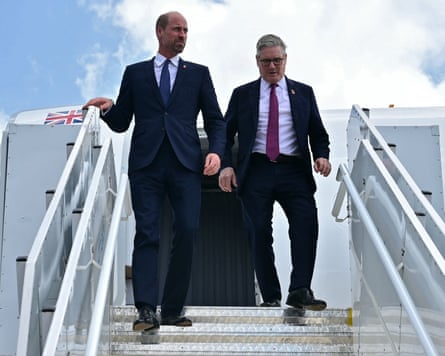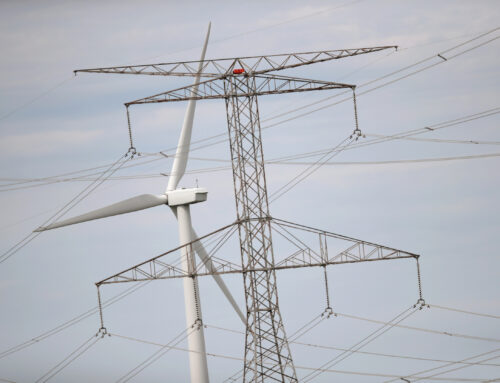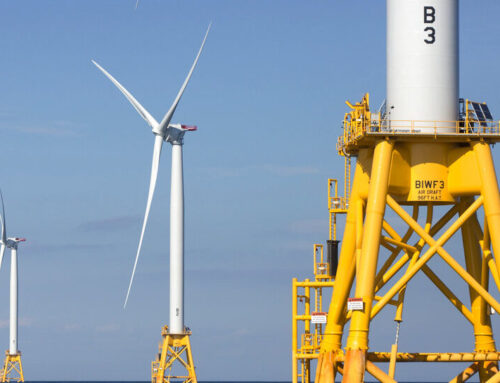How could Tropical Forest Forever fund proposed at Cop30 tackle climate change?
November 6, 2025
As a battle-scarred veteran of the war against nature, Garo Batmanian has spent 45 years trying to defend the Amazon rainforest. For most of that time, the resistance he leads has been outfunded and outgunned by those who profit from destruction. The most Batmanian felt he could achieve was to slow the advance of the chainsaws and tractors.
But the director-general of Brazil’s forest service feels there could be a chance at the Cop30 climate summit in Belém, Brazil, next week, not just of an even fight, but perhaps a victory. There is one condition: world governments must rally behind an initiative being launched by the host nation – the Tropical Forest Forever Facility (TFFF).
“Before, I always felt we could keep the game close but we could never win,” he said. “But this is a gamechanger.”
The TFFF is the biggest and boldest plan yet to staunch the loss of tropical forests that are a pillar of climate stability. Its success depends on buy-in from governments and financial institutions that until now have directed their funds towards destruction.
Championed by Brazil’s globally respected environment minister, Marina Silva, and drawn up with advice from the World Bank, London financial consultants and several governments, the TFFF aims to disrupt the financial logic for deforestation by raising $125bn (£95bn), investing it in bonds, and paying out the returns as a reward for countries and communities that conserve their standing forests.

So far, only Brazil and Indonesia have announced investments in the scheme. The World Bank has agreed to host the facility. Several countries have murmured positively, but not yet committed any money. The UK has made clear it will not contribute at this stage. There will need to be greater momentum at Cop30 if the plan is to get off the ground.
Governments and companies have repeatedly promised – and failed – to deal with the problem of deforestation. The last big push was at Cop26 in Glasgow when world leaders and financial institutions signed up to a commitment for zero deforestation by 2030. Since then the loss of forests has accelerated, largely because banks and treasuries are pouring money into land clearance, according to the latest annual assessment of global forest health.
TFFF will be different, say proponents, primarily because it hopes to be bigger than anything that has come before. Brazil wants to secure $25bn in investments from world governments, and leverage that fund in the bond markets to secure another $100bn from private financial institutions. This will be invested, like an endowment fund, with annual returns that will be used to reward tropical forest nations for good behaviour.
If the full $125bn is secured, this would generate an estimated $800m per year to tropical forest nations, so long as the conditions for forest conservation are met.
For Brazil, home to the world’s biggest tropical forests, the finance ministry calculates this would be 26 times more than it currently receives from the Amazon Fund, which, until now, has been the most advanced and generous forest financing mechanism.
Brazilian finance ministry officials, who have spent the past 18 months working on this project, say the TFFF would be a step-change. “There is no way I would get that amount of money if I asked Oslo or Berlin,” said João Paulo de Resende, the undersecretary for fiscal and economic affairs, who has been working on this project for 18 months. He said the payments would also be less vulnerable to political mood swings. The former US president Joe Biden for example, promised $500m for the Amazon Fund in 2023, but only sought a 10th of that amount from the US Congress, which then gave him nothing.

Unlike the Amazon Fund, the money would pay for standing forests. In a radical departure, it would also earmark 20% of disbursements as direct payments for Indigenous and other traditional forest communities.
The UN secretary-general, António Guterres, told the Guardian this was a positive development because Indigenous communities have been shown to preserve biodiversity and protect carbon sinks. “It is absolutely fundamental,” he said, “to invest in those who are the best guardians of nature. And the best guardians of nature are precisely the Indigenous communities.”
There is no question of the need to increase financial support for forest conservation. The Amazon is one of the world’s most important climate stabilisers, yet it is degrading to a point of no return.
The core problem for the forest – and almost all natural habitats – is that global markets value it more highly dead than alive. Brazil’s proposal aims to shift that logic.
Currently, the benefits of standing forests – temperature reduction, water transport, carbon sequestration, wildlife habitat, living laboratory, psychological wellbeing and more – have largely been taken for granted by industrial capitalism. Financial incentives are instead geared towards clearing the land for monocultures of cattle, soy or other crops that can be easily commodified. Land speculation drives destruction because the price of a property registers a manifold increase once trees have been cut and burned.
Making such activity illegal can slow the loss, as Batmanian has seen over his long career, but enforcement ebbs and flows with different governments, while financial pressures relentlessly encourage deforestation. Carbon credit markets were supposed to rebalance this, but most schemes have failed. Meanwhile, fire, drought and farm expansion are weakening the capacity of this natural carbon sink.

TFFF aims to mobilise money to reverse the course of this battle.
Indigenous groups and longtime environmentalists in Brazil have been involved in the planning of the TFFF. Carlos Rittl, of Wildlife Conservation Society, said the policy had the potential to be transformational for Indigenous territories and would also have considerable benefits for central Africa.
He said: “We have been waiting for so long for something like this. The TFFF can be a turning point to prevent a tipping point in the Amazon and other regions.”
The most innovative, and controversial, feature of TFFF is how it plans to secure finance. Rather than go cap in hand to rich countries for grants, it asks for investments that should be repaid in the future. It is not tied to the UN process, so both the global south and north are asked to invest. The seed funds are from governments.
As TFFF’s money is considered an investment rather than a donation, it hopes to secure funds from the Middle East and China, as well as traditional donor nations in Europe, North America and the far east.
The political winds are not favourable. The US, which helped draw up TFFF plans during the Biden administration, has gone silent under Donald Trump. Another early backer, France, is in turmoil. China – a Brics ally of Brazil – has so far been noncommittal. Brazil’s diplomats and foreign ministry officials say there is strong interest from other countries and are calling on other governments to shore up support. Nobody expects the full $25bn seed-fund target to be committed at Cop30, but for the plan to work, it needs to make a strong start.
The loudest criticism of the scheme is that it is too vulnerable to the gyrations of financial markets and insufficiently transparent about risk. The TFFF plans to invest in bonds in developing nations that have historically been prone to fluctuations.
Resende acknowledges that in some years the facility might not pay out if there are steep market falls similar to those caused by the 2020 Covid epidemic or the 2008-09 financial crisis. But he said the risks had been carefully assessed by the ministry, two UK consultancies, the World Bank, one rating agency, a US financial company, and advisers in half a dozen nations.
He said the four to one leverage ratio was small compared with international financial institutions. Risk would be low because the fund would not invest in stocks, but national and corporate bonds, with no more than a 4% holding in any asset. Modelling, he said, showed that investing countries would get their money back and more, while there would be a far bigger incentive to protect forests.
According to Resende’s calculations, 6m hectares (15m acres) of tropical forest are lost every year, which is equivalent to 1.8bn tonnes of carbon dioxide – or the entire annual emissions of Russia. That is worth $140bn at EU carbon prices.
“If TFFF is responsible for a 20% reduction in deforestation, then we repay the money in one year,” Resende said. “It is a small risk with an enormous return. There is no better cost benefit than this anywhere in the world.”
Cop30 will show how much the world is ready to invest in that idea.
Search
RECENT PRESS RELEASES
Related Post




